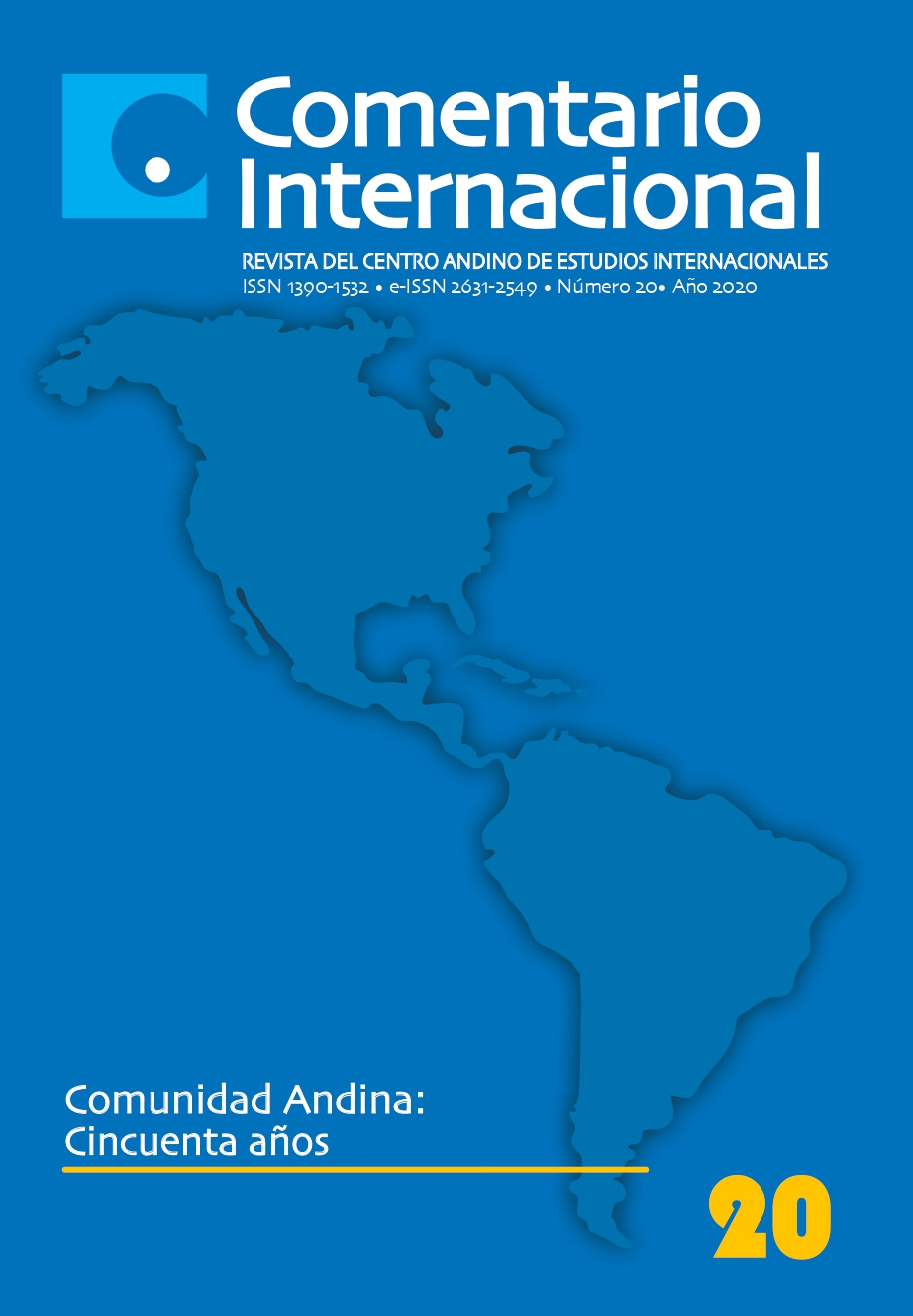Between Hierarchy and Individuality: the Andean Community of Nations’ historical rationalities
DOI:
https://doi.org/10.32719/26312549.2020.20.1.4Keywords:
regional integration, Latin American integration, Andean Pact, Andean community, grid-group cultural theory, multiple rationalities, wicked problemsAbstract
In its 50 years, CAN has faced important challenges, some have even threatened its existence. Nevertheless, the fact that it has survived is a testament to its success. On the face of greatly changing political and economic environments, the continuity of its work can be explained by its ability to adapt to the situation. In this half of century, the mechanism has undergone more than one existential crisis and it has tackled each with important self-reforms. These modifications have sought to renew its relevancy. In order to make sense of this adaptation, this article uses grid-group cultural theory to identify the main rationalities or worldviews that have driven this regional integration process. The analysis shows that CAN has mainly moved between hierarchical and individualistic ways of life, and points to some implications for its near future.
Downloads
Downloads
Published
How to Cite
Issue
Section
License
Copyright (c) 2021 Comentario Internacional. Journal of the Andean Center of International Studies

This work is licensed under a Creative Commons Attribution-NonCommercial 4.0 International License.
Authors who publish in this journal accept the following conditions:
1. The authors keep the copyright and assign to the journal Comentario Internacional the right of the first publication, with the work registered with the attribution license of Creative Commons, which allows third parties to use what is published whenever they mention the authorship of the work and the first publication in this journal.
2. Authors can make other independent and additional contractual arrangements for the non-exclusive distribution of the article published in this journal (eg, include it in an institutional repository or publish it in a book) provided they clearly indicate that the work was published for the first time in Comentario Internacional.







